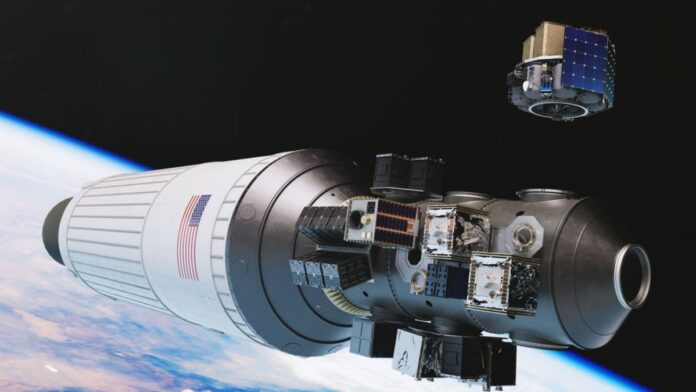Space launch startup Launcher said its first spacecraft, which launched on a SpaceX rocket last month, has failed.
The Launcher Orbiter SN1, the company’s first spacecraft, launched on the SpaceX Transporter-6 mission, which took off from Cape Canaveral Space Force Station in Florida last month carrying 114 satellites to orbit — the second-most spacecraft ever launched on a single mission. Transporter-6 was SpaceX’s 200th flight and deployed a wide variety of payloads, including a Space Force weather cubesat and a prototype solar sail designed by French firm Gama.
At least one of the mission’s payloads has now been confirmed to have failed. In a statement (opens in new tab) published Thursday (Feb. 16), Launcher said that its Orbiter SN1 spacecraft stopped operating due to a loss of power and control. “Unfortunately, after that time period, the vehicle stopped operating as we were not able to generate power from our solar panels due to an orientation control issue caused by a fault in our GPS antenna system,” Launcher said in the statement.
Related: Space startup Launcher to fly an orbital platform filled with cubesats on a SpaceX rocket in 2022
In the statement outlining the failure, Launcher calls Orbiter SN1 a “high delta-v capable space tug,” with delta-v referring to the craft’s ability to change trajectory or velocity.
On the company’s website (opens in new tab), Launcher writes that Orbiter can “perform any combination of maneuvers to modify your orbit and precisely place individual satellites in their exact locations.” This capability allows Launcher to place satellites into precise orbits not constrained by their particular launch rideshare, enabling their customers more flexibility in choosing their satellites’ final orbits.
Following the failure, Launcher stated it will redesign its GPS radio and antenna subsystems for future flights to ensure that this issue does not reoccur. The company also said it has “improved Orbiter’s battery charger to allow charging and recovery in nearly all spacecraft anomalous events as well as doubled the battery capacity.”
Launcher plans to launch additional missions later this year, on SpaceX’s Transporter-8 mission in June and Transporter-9 in October.
Follow Brett on Twitter at @bretttingley (opens in new tab). Follow us @Spacedotcom (opens in new tab), or on Facebook (opens in new tab) and Instagram (opens in new tab).

